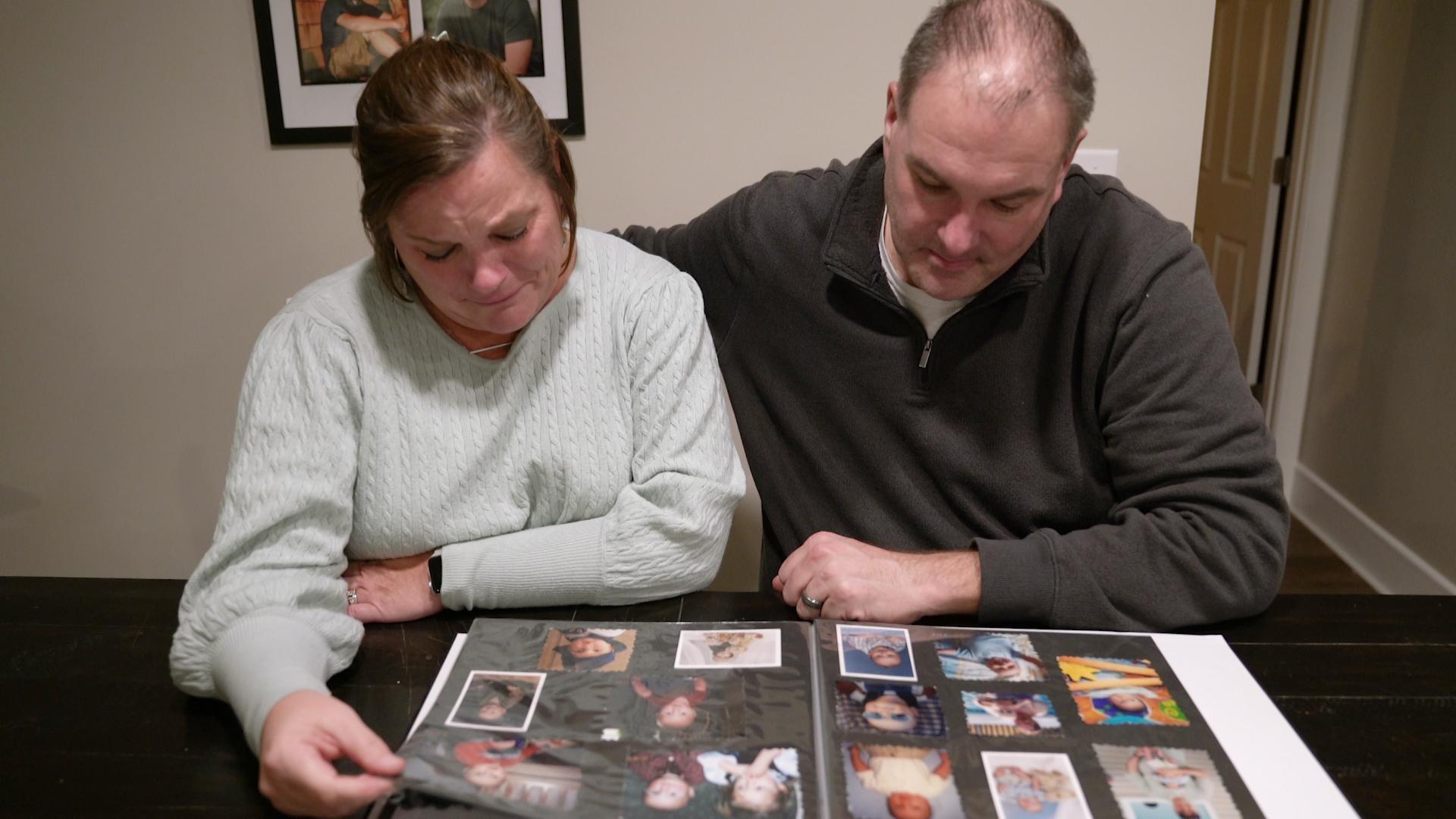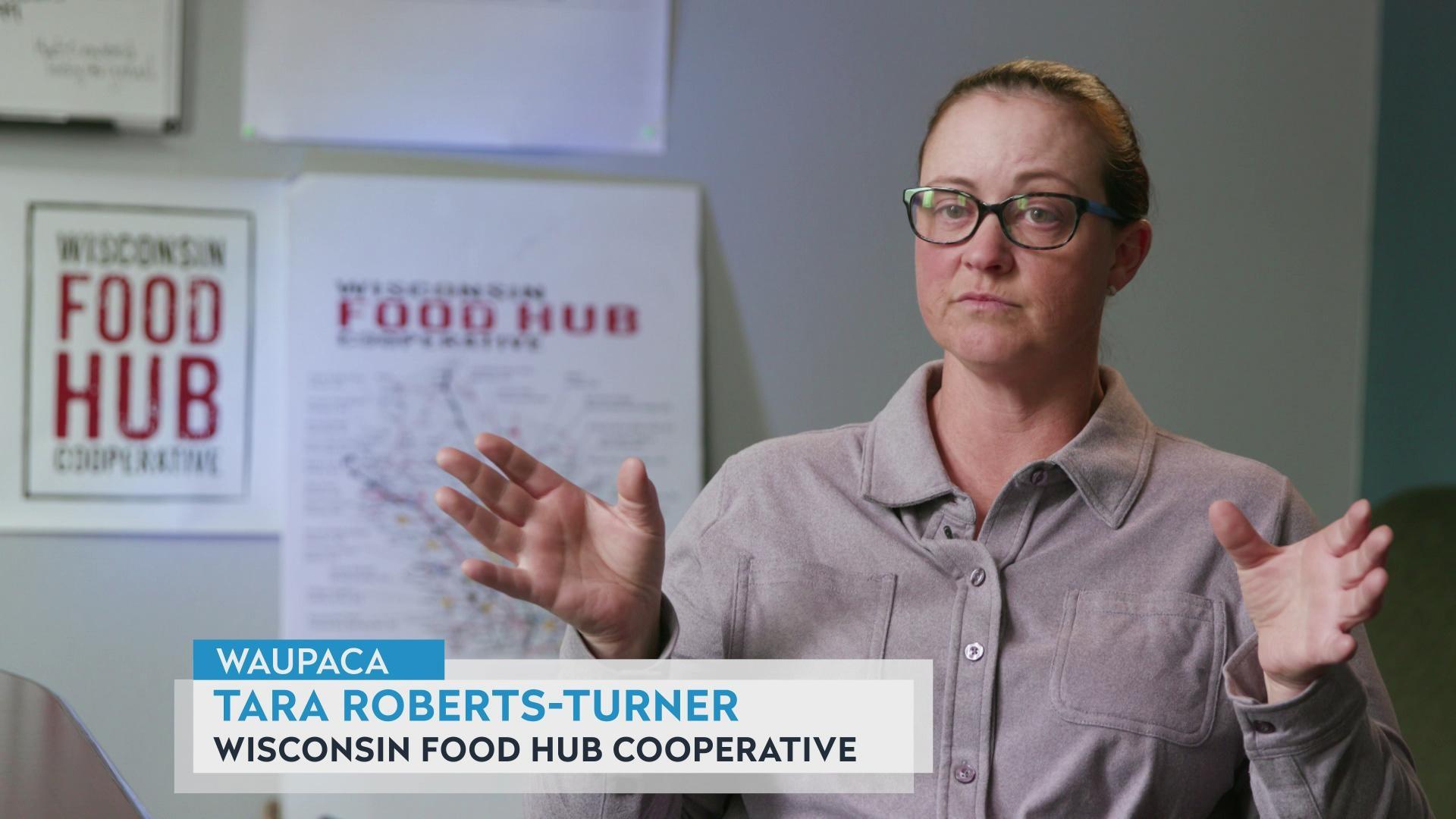Andy Moore:
Hello, everybody. Good afternoon, I’m Andy Moore, I’m the producer of the Here & Now program. I’m substituting for Marisa for this week’s Noon Wednesday. The new year takes us into the heart of the flu season and so today, we’re going to discover and learn a little bit about what’s going on in Wisconsin with influenza. But first a few statistics that I’m going to read to you. The latest state virus surveillance report places Wisconsin at a high level of influenza activity. Over 1,200 people positively tested for influenza so far this season with 459 hospitalizations so far. Those numbers, as we’ll hear in a moment, are increasing daily. Seasonal total of 14 flu-related deaths in Wisconsin to date. 798 pneumonia associated deaths, a relationship that our guest will help us make in just a moment, to the flu. And we’re going to learn more about this with Department of Health Services State influenza surveillance coordinator, Tom Haupt. Thanks for joining us, Tom.
Tom Haupt:
Thank you, Andy, it’s a pleasure to be here.
Andy Moore:
Tom, by the way, celebrated 32 years with Health Services, yesterday.
Tom Haupt:
35, but who’s counting.
Andy Moore:
35, okay. All right, now I hate to get off on the wrong number, but 35, congratulations.
Tom Haupt:
Thank you.
Andy Moore:
I noticed, I noted that there, all of these stats that we just heard was within a season. How is season defined?
Tom Haupt:
Well, first we have to realize that influenza is year-round. We’ve had cases throughout the year, even in summer, for the past few years. But our influenza surveillance season starts in October, ends in May. And that’s consistent with every year. It’s just more of a surveillance technicality than anything else. We really do want to emphasize that flu is around year round. People get sick even during the summer with influenza.
Andy Moore:
It’s not like it’s put in a lock box because the winter’s over.
Tom Haupt:
That’s correct. It’s something that we have to deal with and we test for and we do surveillance for 365 days a year.
Andy Moore:
How do the statistics that I just shared compare to past years?
Tom Haupt:
Well it’s significantly higher than it was last year at this time. One big difference that we’ve seen this year is the influenza hospitalizations have really been affecting the younger population. Our highest number is between the 18 and 49 year old range, compared to previous years where it’s always been over 65. We are seeing a higher incidence of out-patient influenza-like illness as well, compared to previous years. Not anything like what we had during the 2017, 2018 year and that was the year where CDC and Wisconsin, we had probably the worst influenza season in the past 40 years. It’s not reached that problem threshold yet, but it is higher than it has been over the previous years.
Andy Moore:
You mentioned children at the top of that remark. There are more vulnerable populations and children and older persons are among them. What is there to know about the greater risk with populations of that sort?
Tom Haupt:
Well, the greatest risk is with the vaccinations. The older population does not get the protection that a normal, healthy adult would get. And that’s the same with young children as well. Children can be vaccinated once they’re turned six months of age, but any newborn children have absolutely no protection. They are depending on the people around them to be vaccinated and that’s the best way that we can protect those young children. Also, the influenza virus that’s circulating, the influenza B virus, is predominantly and historically known to affect the younger population and younger children, and that’s been the case this year.
Andy Moore:
Are we at an overall rate of infection, as of today, that would indicate an alarming case load, or a moderately alarming, or?
Tom Haupt:
I would say a concerning rail. That would be the best term that I could use. I mean, we do see this every year but with the significant increase we saw during the holiday season, during Christmas, during New Years, it is concerning. And we’re not sure if we’re at peak activity or not. We’re hoping that we’re getting close and that the rates will start to decline. But that’s still yet to be known. It could be another year like last year and the year before where we had extended seasons that went into April and even May. That always increases the number of people who are hospitalized as well. It’s very hard to predict but we are continuing to monitor it, again, on a daily basis, to make sure we’re ahead of the game and we’re comparing our numbers both regionally and with the CDC on national basis.
Andy Moore:
How do we compare with our rates to other mid-Western states, at this stage of the game?
Tom Haupt:
We’re very comparable. We have a very tight-knit group of influenza coordinators who meets every month to talk about what we’re seeing both at influenza and other respiratory viruses. And for the most part we are very consistent, seeing the influenza B virus as the predominant strain. Again, affecting the younger population more so than the older population. None of the states in the mid-West have peaked yet. There is some talk that maybe some of the Southern states, Mississippi, Louisiana, might be at their peak activity and may be decreasing, but it seems to have gone from the South to the North in the United States. So we have not reached peak activity at this point.
Andy Moore:
You say influenza B, how many other strains of influenza are there?
Tom Haupt:
Well there’s influenza A, which has several different types. Influenza A H1, again, hits the younger population. The H3 virus which we’ve had over the past two years, really hits the elderly population hard. Over the past two years the hospitalization rates from the H3 virus, over 65% have been over 65 years old. So it really. There’s also an influenza C virus, but that is mainly amongst animals and rarely diagnosed in humans.
Andy Moore:
Now this is the third time that children have come up. So I want to help people watching understand, why are children at greater risk, why are older people at greater risk, and what steps can be taken, vaccination obviously, but why are they at greater risk?
Tom Haupt:
Again, at the younger population and older population, may not get the full vaccination protection that a normal, healthy adult would get. So that’s why it’s very important that you get vaccinated, not only to prevent illness, but to prevent complications of illness which is pneumonia or unfortunately, death. And we also want to protect those people around us who don’t get that proper protection from the vaccination.
Andy Moore:
You often hear about someone coming down with a case of influenza and then sliding into a case of pneumonia. You hear about that a lot.
Tom Haupt:
Yes.
Andy Moore:
Just anecdotally with co-workers, friends, family members. Help us understand the relationship between those two illnesses.
Tom Haupt:
Sure. Pneumonia’s actually a complication of influenza. It could be caused strictly by the influenza virus, or it could be caused by a secondary bacterial infection. I often get the question asked from me, “When do you see your physician, “when do you call your doctor?” And one of the things that I’ve really been trying to get across to people is if you start making a recovery after an upper respiratory illness, and then two days later you start getting sicker, that’s indicative of a bacterial infection, which could be very serious and lead to more complications and hospitalizations.
Andy Moore:
What percentage of Wisconsinites today have been vaccinated?
Tom Haupt:
Right as of today, we’ve had 37% vaccinated. Which is about one and a half percent higher than we were at last year’s rate. Last year we did have a record vaccination rate of 40%, which doesn’t sound like a lot and I think we can do a lot better, but we’re hoping to break that record this year and we are ahead of pace for breaking that record at this point.
Andy Moore:
How is it that some people will get a vaccination and then still come down with a strain of influenza, even though that may be a more moderate case?
Tom Haupt:
It happens. There’s several ways. I mean, the vaccination, once you’ve received the vaccine, takes two weeks for it to be fully protective. So if you’re exposed during that time, you definitely can come down with it. But as you mentioned, Andy, when we do get vaccinated and we do come down with the flu, it usually is much milder and it does not result in any complications. The main purpose of the influenza vaccine is to prevent people from going to the hospital, preventing death. It also will work for most healthy adults to prevent them from actually coming down with any illness.
Andy Moore:
I don’t want to confuse people with my last question, but is it possible for someone to come down with a case of influenza and it be so mild that they can shake it off and presents as respiratory but then they work through it and it’s not the bone crushing?
Tom Haupt:
Yes, absolutely.
Andy Moore:
Even without a flu shot?
Tom Haupt:
Absolutely. I mean, people, their immune systems differ. Some people will get over it very quickly and again if you have been vaccinated, that will help you to have a less severe form of influenza. That’s been proven time and time again. So it’s really important that people consider the vaccination. There’s still plenty of vaccine available, it’s a safe vaccine and we’ve changed several components this year to make it more effective. We’re very interested to see how these vaccine efficacy rates come out and that’ll be in about three weeks. It’s hard to predict at this point but we’re very optimistic that it’s gonna be better than last year.
Andy Moore:
Why do you think that people drag their feet when it comes to getting a vaccination?
Tom Haupt:
I wish I could give you a firm answer on that, and it’s very frustrating to me. They deal with many people who get vaccinated for everything but influenza. I don’t know the reason why. Some people think that they can come down with the flu from the influenza vaccine, but the influenza shot itself is an inactivated, or a dead virus. You cannot get influenza from the vaccine. Some people have reactions to it. Usually, it’s just a sore arm, a little bit of redness, so some people might get a mild fever. But again, we try to preach the truth to get this information out to people to realize that we’re dealing with a very severe respiratory virus that actually can lead to death.
Andy Moore:
And vaccinations are very widely available, are they not? Can you just give us some examples of places where people are able to obtain?
Tom Haupt:
Yes, definitely. You can get it at your local health department for certain, especially for children, for the vaccine for children programs. You can actually go to your clinic, you can go to a pharmacy. Many times people go to the pharmacy. I got my shot at the pharmacy this year for the first time, it was just more convenient for me to get in. My wife and I went in at the same time. It works very well. But everybody knows, I mean, there is vaccine available and please do not be afraid of it. It can only help.
Andy Moore:
Beyond the public health repercussions of getting vaccinated, of getting the flu, are there dollar and cents impacts of the flu on the Health Care system?
Tom Haupt:
Absolutely. Especially when you have complications. It can be very costly when you’re in the hospital and suffering from pneumonia. Unfortunately, we have, I do know of some patients, especially young children who are hospitalized and are in intensive care units and unfortunately some of them have needed help in order to breathe. So all that does cost a lot of money and it does put a lot of burden on the financial systems due to the complications of influenza.
Andy Moore:
Tom Haupt is the state’s influenza surveillance coordinator and I want to let people know that the Department of Health’s services puts out a weekly surveillance report. Tom reminded me before we started today that comes out each Friday.
Tom Haupt:
Friday.
Andy Moore:
And that is on the Department of Health services website which, and that site is, what is the site?
Tom Haupt:
We could just Google the Department of Health services, and then go onto the search for the weekly respiratory virus and it should pop up.
Andy Moore:
And so that will be coming out this Friday as it does each Friday. Something for people to keep an eye on. Is there anything else that you want people to know going into 2020 that we haven’t discussed?
Tom Haupt:
Well, all I want to say is that we’re in the middle of the season and I’m anticipating that things may get worse before they get better. But we have to take note and protect ourselves, do what we can to get vaccinated to protect those people around you. Practice good hygiene, too. That means coughing into your sleeve, throwing away the tissues and washing your hands. If you’re not feeling well, stay away from work, stay away from people who are highly susceptible. We are starting to get more outbreaks in long-term care facilities, too. And that’s usually brought in by visitors who think that they are not infectious, it’s maybe allergies. You gotta give yourself some time to heal on these cases ’cause what you might be spreading to the susceptible person could ultimately wind up with severe complications.
Andy Moore:
Tom Haupt, 35 years and one day with the Department of Health services. I’m Andy Moore, the producer of Here & Now. Speaking of Here & Now, I just want to give you a quick look into the future on Friday’s show. We’ve been working on it this week. We’ll hear about the Middle East US activity from Representative Mike Gallagher of Green Bay, Republican of Green Bay and also from Representative Mark Pocan, a Democrat of the Madison area. Something that you’ll want to tune into on Friday night, on Here & Now with Frederica Freyberg. Marisa will be back next week. I’m Andy Moore and thanks a lot for watching Noon Wednesday.
Search Episodes
News Stories from PBS Wisconsin

Donate to sign up. Activate and sign in to Passport. It's that easy to help PBS Wisconsin serve your community through media that educates, inspires, and entertains.
Make your membership gift today
Only for new users: Activate Passport using your code or email address
Already a member?
Look up my account
Need some help? Go to FAQ or visit PBS Passport Help
Need help accessing PBS Wisconsin anywhere?

Online Access | Platform & Device Access | Cable or Satellite Access | Over-The-Air Access
Visit Access Guide
Need help accessing PBS Wisconsin anywhere?

Visit Our
Live TV Access Guide
Online AccessPlatform & Device Access
Cable or Satellite Access
Over-The-Air Access
Visit Access Guide
 Passport
Passport


















Follow Us